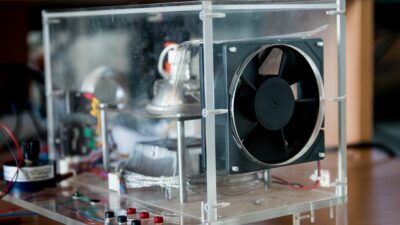In the ever-evolving realm of artificial intelligence (AI) and machine learning (ML), neural networks have emerged as one of the most influential and transformative technologies. They serve as the backbone of many applications, from image and speech recognition to natural language processing and beyond. This article delves into the fundamental concepts of neural networks, their architecture, training mechanisms, and real-world applications, shedding light on their significance in today’s technological landscape.
What are Neural Networks?
At its core, a neural network is a computational model inspired by the human brain’s structure and functionalities. It consists of interconnected nodes, called neurons, organized in layers. These layers include:
-
Input Layer: This is where the model receives the data. Each neuron in this layer represents a feature of the input.
-
Hidden Layers: These layers process the input data through a series of transformations. The complexity and depth of a neural network are defined by the number of hidden layers it contains.
- Output Layer: This layer produces the final output, which represents the prediction or classification made by the network.
How Neural Networks Work
The operation of a neural network revolves around three core components: weights, biases, and activation functions.
-
Weights: Each connection between neurons has an associated weight that adjusts as learning progresses. These weights determine the significance of the input features during the training process.
-
Biases: Bias values are added to the weighted sum of the inputs to allow the model to fit the data better. They enable neurons to activate even when the input is zero.
- Activation Functions: These functions introduce non-linearity into the network, enabling it to learn complex patterns in the data. Common activation functions include the Sigmoid, ReLU (Rectified Linear Unit), and Tanh functions.
Training Neural Networks
Training a neural network involves a process called backpropagation, which adjusts the weights and biases iteratively to minimize the error in predictions. This process encompasses several key steps:
-
Forward Propagation: Input data is passed through the network, and predictions are made based on current weights and biases.
-
Loss Calculation: The difference between predicted outputs and actual target values is quantified using a loss function, which measures the network’s performance.
-
Backward Propagation: The error is propagated back through the layers, and gradients are calculated using the chain rule. Improvements in weights and biases are made based on these gradients.
- Optimization: An optimization algorithm, such as Stochastic Gradient Descent (SGD), is used to update the weights and biases iteratively, aiming to minimize the loss function.
Key Types of Neural Networks
-
Feedforward Neural Networks: The simplest type, where connections between neurons do not form cycles. Data moves in one direction—from input to output.
-
Convolutional Neural Networks (CNNs): Primarily used for image processing, CNNs utilize convolutional layers to automatically detect features and patterns, significantly improving performance in visual tasks.
-
Recurrent Neural Networks (RNNs): Designed for sequential data, RNNs have loops that allow information to persist. They are widely used in natural language processing and time series analysis.
- Generative Adversarial Networks (GANs): These networks consist of two parts—a generator and a discriminator. The generator creates data, while the discriminator evaluates its authenticity, facilitating the generation of realistic outputs.
Real-World Applications
Neural networks are omnipresent in various industries and applications:
-
Healthcare: They assist in diagnosing diseases from medical images, predicting patient outcomes, and personalizing treatment plans.
-
Finance: Algorithms powered by neural networks conduct risk assessments, detect fraudulent activities, and automate trading strategies.
-
Transportation: In self-driving cars, neural networks process real-time sensor data to make driving decisions.
- Entertainment: They recommend movies and music based on user preferences, analyze trends, and create content.
Challenges and Future Directions
Despite their power, neural networks present certain challenges:
-
Data Requirements: They typically require large amounts of labeled data for training, which can be a barrier for many applications.
-
Interpretability: Understanding how decisions are made by these black-box models remains a significant hurdle for deployment in sensitive domains.
- Computational Costs: Training deep neural networks can require substantial computational resources, making it crucial to optimize architectures and processes.
Conclusion
As we continue to explore the capabilities of neural networks, their role in the future of AI and machine learning is undeniable. By mimicking the complex processes of the human brain, neural networks open doors to innovations that enhance our daily lives and pave the way for groundbreaking advancements across diverse fields. Understanding their foundational principles not only equips us to harness their potential but also inspires us to contribute to this dynamic yet critical domain. As researchers work to overcome existing challenges, the next generation of neural networks promises to be even more powerful, efficient, and transformative.



